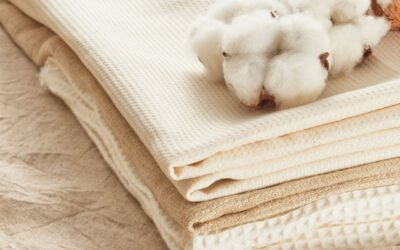Fast Fashion vs. Slow Fashion: Why It’s Time to Rethink Our Wardrobes
There are shirts in our closets that have never touched our skin.
Tags still dangling like forgotten promises.
They arrived on a whim—caught in the slipstream of a late-night scroll or a “flash sale” timer ticking down to nothing.And yet we keep them, these silent strangers, while our laundry piles grow and the landfills follow suit.
This isn’t just about shopping.
It’s about how we relate to the materials closest to our bodies.
Fast Fashion: A System of Disconnect
Fast fashion doesn’t simply offer convenience—it feeds on disconnection.
We don’t see the river dyed indigo so our jeans could be “stone-washed.”
We don’t hear the clatter of machines that work longer than the people operating them.
We don’t pause to ask why a T-shirt costs less than our morning coffee.
When we buy clothing that costs nearly nothing, someone—somewhere—is paying for it.
- A field is stripped of life so polyester can be poured into fabric.
- A seamstress skips meals to finish a quota.
- A garment ends up in the trash within months, not because it failed, but because it was designed to fade from our desire.
Fast fashion builds its empire not on fabric, but on forgetting.
Slow Fashion: A Practice of Remembering
Slow fashion is not nostalgia—it is a deliberate decision to remember:
Where your clothes came from.
Who crafted them.
What fibers touch your body every day.
It’s not always romantic. Sometimes it means saying no to a trend, or waiting weeks for a handmade piece to arrive.
But in the waiting, something shifts. You start to feel your own rhythm again.
Slow fashion doesn’t shout.
It hums in quiet threads:
- A cotton shirt that softens over time, not because it’s worn out, but because it has lived with you.
- A jacket repaired at the elbow—because you reached for something, and it mattered.
- A wardrobe that doesn’t overflow, but breathes.
This is not minimalism for the sake of aesthetic. This is simplification with soul.
What It Looks Like in Practice
This lifestyle isn’t about purging your closet or buying linen tunics from artisanal markets (though you can, if that’s your rhythm). It’s more subtle.
You start checking tags—not for brand names, but for materials: 100% cotton? GOTS certified?
- You begin to fold things with care.
- You wash on cold.
- You mend a loose button instead of replacing the whole garment.
- You notice that the things you reach for most are the ones that feel… honest. Weighty with presence. Made by human hands.
Clothing as a Conversation
The clothes you wear are not silent.
They speak to your skin. They speak to the world.
And more importantly, they speak back to you.
Do they say:
“I was made in a rush, and I’m already falling apart”?
Or: “I am here for every season. I remember the shape of you”?
Let your wardrobe become a conversation, not a consumption cycle.
A Note from the Cotton Fields
At Pure Cotton Lifestyle, we believe in the quiet dignity of natural fibers.
Organic cotton, especially when grown and harvested ethically, carries the essence of the earth and the work of skilled hands.
It doesn’t need to be flashy.
It needs to be felt.
Every fabric tells a story.
The question is: do we want to be part of stories that harm, or stories that heal?
A Gentle Shift
Fast fashion sells impulse.
Slow fashion invites intimacy.
This is the shift we’re making—not out of guilt, but out of care.
Not to be perfect, but to be present.
So next time you reach into your wardrobe…
Listen.
What is your clothing trying to tell you?
Browse Our Favorite Finds
Cotton, Linen & Wool: Why These Fabrics Have Lasted for Centuries
Written in the romantic, breezy spirit of Pure...
What Are “Natural Fabrics” and Why Are They a Thing?
In a world dominated by synthetic materials,...
Textiles & Natural Fabrics: Are We Being Pushed Away from the Natural Way of Life?
Have you ever wondered why, in a world full of...


